Related Research Articles
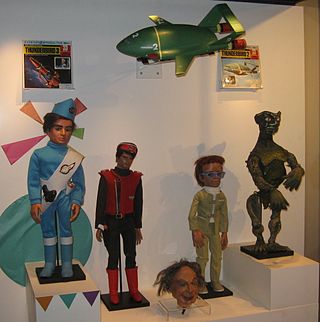
Supermarionation is a style of television and film production employed by British company AP Films in its puppet TV series and feature films of the 1960s. These productions were created by Gerry and Sylvia Anderson and filmed at APF's studios on the Slough Trading Estate. The characters were played by electronic marionettes with a moveable lower lip, which opened and closed in time with pre-recorded dialogue by means of a solenoid in the puppet's head or chest. The productions were mostly science fiction with the puppetry supervised by Christine Glanville, art direction by either Bob Bell or Keith Wilson, and music composed by Barry Gray. They also made extensive use of scale model special effects, directed by Derek Meddings.

Puppetry is a form of theatre or performance that involves the manipulation of puppets – inanimate objects, often resembling some type of human or animal figure, that are animated or manipulated by a human called a puppeteer. Such a performance is also known as a puppet production. The script for a puppet production is called a puppet play. Puppeteers use movements from hands and arms to control devices such as rods or strings to move the body, head, limbs, and in some cases the mouth and eyes of the puppet. The puppeteer sometimes speaks in the voice of the character of the puppet, while at other times they perform to a recorded soundtrack.

A marionette is a puppet controlled from above using wires or strings depending on regional variations. A marionette's puppeteer is called a marionettist. Marionettes are operated with the puppeteer hidden or revealed to an audience by using a vertical or horizontal control bar in different forms of theatres or entertainment venues. They have also been used in films and on television. The attachment of the strings varies according to its character or purpose.

Howdy Doody is an American children's television program that was created and produced by Victor F. Campbell and E. Roger Muir. It was broadcast on the NBC television network in the United States from December 27, 1947, until September 24, 1960. It was a pioneer of children's programming and set the pattern for many similar shows. One of the first television series produced at NBC in Rockefeller Center, in Studio 3A, it pioneered color production in 1956 and NBC used the show to promote color television sets in the late 1950s.
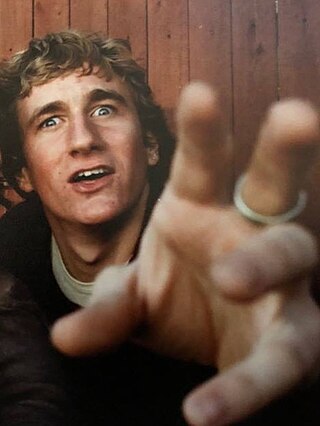
Brian Henson is an American puppeteer, filmmaker, actor and the chairman of The Jim Henson Company. He is the son of puppeteers Jim and Jane Henson.
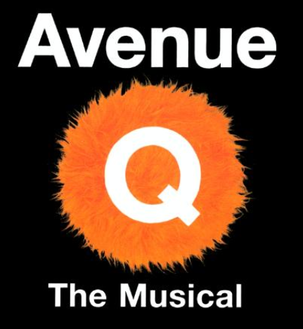
Avenue Q is a musical comedy featuring puppets and human actors with music and lyrics by Robert Lopez and Jeff Marx and book by Jeff Whitty. It won Best Musical, Book, and Score at the 2004 Tony Awards. The show's format is a parody of Sesame Street, but its content involves adult-oriented themes. It has been praised for its approach to themes of racism, homosexuality and internet pornography.

Wanderly Wagon is an Irish children's television series which aired on RTÉ from Saturday 30 September 1967 until 1982.
Blinky Bill is an anthropomorphic koala and children's fictional character created by author and illustrator Dorothy Wall. The character of Blinky first appeared in Brooke Nicholls' 1933 book, Jacko – the Broadcasting Kookaburra, which was illustrated by Wall. Wall then featured Blinky Bill in a series of her own books, including Blinky Bill: The Quaint Little Australian, Blinky Bill Grows Up, and Blinky Bill and Nutsy. The books are considered quintessential Australian children's classics, and have never been out of print in Australia.

Rainbow is a British children's television series, created by Pamela Lonsdale, which ran from 16 October 1972 until 6 March 1992, made by Thames Television. The series was revived by Tetra Films from 10 January 1994 until 24 March 1997, in two different formats from the original Thames Television series, with differing cast members. The series was originally conceived as a British equivalent of Sesame Street.
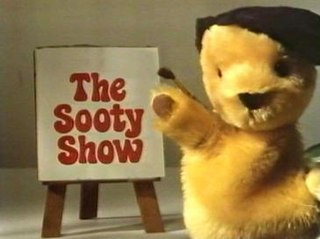
The Sooty Show is a British children's television series, created by Harry Corbett, and produced for the BBC from 1955 to 1967, and then for ITV from 1968 until 1992. The show, part of the Sooty franchise, focuses on the mischievous adventures of the glove puppet character of the same name, alongside his friends Sweep and Soo, and their handler. Between 1955 and 1975, Corbett presented the programme until his retirement, before it was taken over by his son Matthew Corbett. It also co-starred Marjorie Corbett as the voice of Soo from the character's debut in 1964, until her retirement in 1981, whereupon Brenda Longman replaced her.

Skippy: Adventures in Bushtown is an Australian animated children's series created by Yoram Gross, set in a fictionalised Australian town. It is based on the character Skippy from the 1968 live-action series Skippy the Bush Kangaroo.
Digital puppetry is the manipulation and performance of digitally animated 2D or 3D figures and objects in a virtual environment that are rendered in real-time by computers. It is most commonly used in filmmaking and television production but has also been used in interactive theme park attractions and live theatre.
Adventure Time was a local children's television show on WTAE-TV 4 in Pittsburgh, Pennsylvania, from 1958 to 1979. It was hosted by Paul Shannon from 1958 until his retirement in 1975, accompanied by guitarist Joe Negri and puppeteer Jim Martin. Negri took over as the show's host from 1975 until 1979.

Salem Saberhagen is a character from the American Archie Comics comic series Sabrina the Teenage Witch. Salem is an American Shorthair cat who lives with Sabrina Spellman, Hilda Spellman and Zelda Spellman in the fictional town of Greendale, located near Riverdale. Formerly a human warlock, Salem was sentenced by the Witch's Council to spend 100 years as a cat, as punishment for trying to take over the world. Salem first appeared alongside Sabrina in Archie's Mad House #22 in 1962, and was created by George Gladir and Dan DeCarlo.

The Adventures of Blinky Bill is an Australian animated television series based on Dorothy Wall's books about Blinky Bill, and is a sequel series to the 1992 film Blinky Bill: The Mischievous Koala. The series is produced by the Yoram Gross companies: Yoram Gross Film Studios and Yoram Gross-EM.TV, with the main co-production of EM.TV and WDR. All three seasons of the series and the TV film were animated overseas by Colorland Animation Productions Co., Ltd. in Hong Kong. Set in Greenpatch, a fictional Australian bushland town, the series presents stories through the activities and misadventures of Blinky Bill, as well as his family and friends.
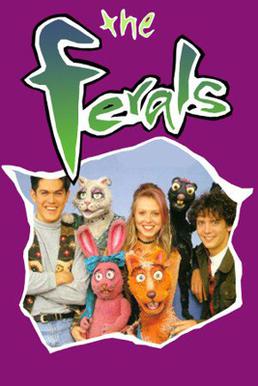
The Ferals was an Australian children's comedy television series which screened on the ABC from 1994 to 1995. It was created by Wendy Gray and Claire Henderson and featured a mixture of people and animal puppets known as the "Ferals". It was lauded for its irreverent humour and distinctive characters, some of which featured on other ABC programming. Garth Frost was responsible for the puppet design. The opening theme was written by Peter Dasent and Arthur Baysting and performed by Dave Dobbyn. In the UK, the show aired on satellite television via Nickelodeon UK.

A puppet is an object, often resembling a human, animal or mythical figure, that is animated or manipulated by a person called a puppeteer. Puppetry is an ancient form of theatre which dates back to the 5th century BC in ancient Greece.
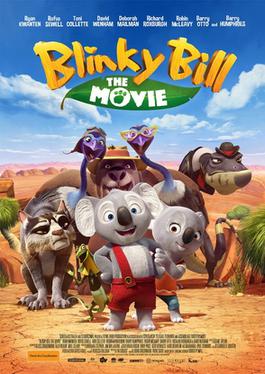
Blinky Bill the Movie is a 2015 animated adventure comedy film based on the Blinky Bill character created by Dorothy Wall for a children's book series in 1933. The film was produced by Flying Bark Productions and partly distributed and co-produced by Assemblage Entertainment and Telegael.

The Wild Adventures of Blinky Bill is an Australian animated television series based on the books by Dorothy Wall, and a sequel series to the 2015 film Blinky Bill the Movie.